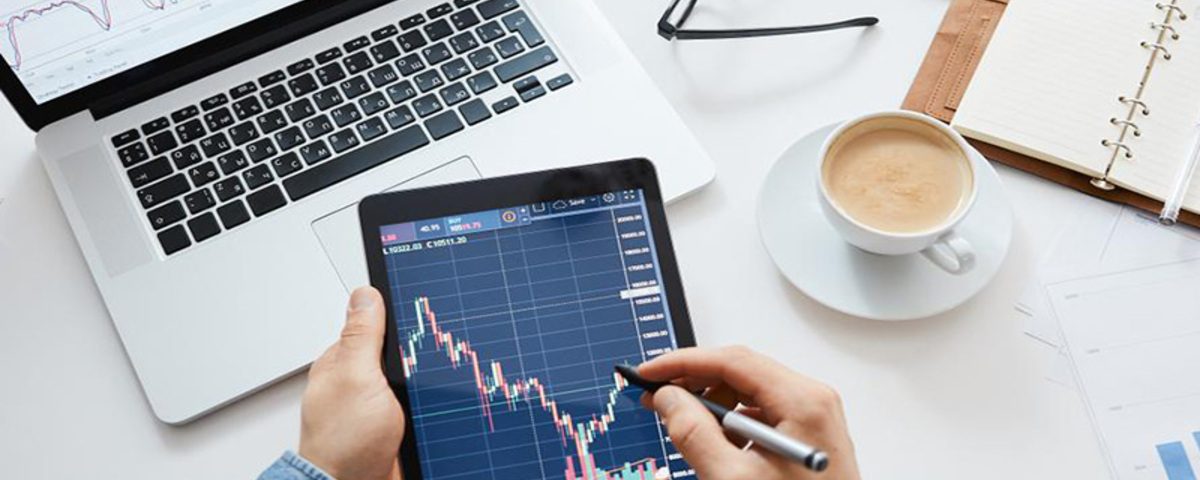
The Role of Central Banks in Forex: A Comprehensive Guide
17/07/2024
Impact of Geopolitical Events on Forex: A Comprehensive Guide
18/07/2024Currency Correlation in Forex Trading: A Comprehensive Guide
Introduction to Currency Correlation
Currency correlation is a statistical measure that describes the degree to which two currency pairs move in relation to each other. Understanding currency correlation is essential for Forex traders as it helps in diversifying risk, optimizing trading strategies, and enhancing overall trading performance. This comprehensive guide will explore the concept of currency correlation, its importance in Forex trading, and how traders can effectively utilize it in their trading strategies. By the end of this article, you will have a solid understanding of currency correlation and how to apply it to your trading decisions.
What is Currency Correlation?
Currency correlation indicates how currency pairs move relative to each other. Correlations are measured on a scale from -1 to +1, where:
- +1: Perfect positive correlation. Two currency pairs move in the same direction 100% of the time.
- -1: Perfect negative correlation. Two currency pairs move in opposite directions 100% of the time.
- 0: No correlation. The movements of the currency pairs are completely random and independent of each other.
Positive Correlation
A positive correlation means that two currency pairs tend to move in the same direction. For example, if EUR/USD and GBP/USD have a high positive correlation, when EUR/USD moves up, GBP/USD is likely to move up as well.
Negative Correlation
A negative correlation means that two currency pairs tend to move in opposite directions. For example, if EUR/USD and USD/CHF have a high negative correlation, when EUR/USD moves up, USD/CHF is likely to move down.
Importance of Currency Correlation in Forex Trading
1. Risk Management
Understanding currency correlation helps traders manage risk more effectively. By analyzing correlations, traders can avoid overexposure to similar currency pairs and diversify their portfolios to spread risk.
2. Diversification
Diversification involves spreading investments across different assets to reduce risk. By choosing currency pairs with low or negative correlations, traders can diversify their portfolios and minimize the impact of adverse market movements.
3. Optimizing Trading Strategies
Currency correlation can be used to optimize trading strategies. Traders can identify pairs that move together and develop strategies that capitalize on these movements, or they can use negatively correlated pairs to hedge their positions.
4. Identifying Trading Opportunities
Analyzing currency correlations can help traders identify potential trading opportunities. By understanding how different pairs interact, traders can anticipate market movements and make informed trading decisions.
Calculating Currency Correlation
Currency correlation is typically calculated using historical price data. The most common method for calculating correlation is the Pearson correlation coefficient, which measures the linear relationship between two variables.
Pearson Correlation Coefficient Formula
The Pearson correlation coefficient (r) is calculated using the following formula:
[ r = \frac{n(\sum xy) – (\sum x)(\sum y)}{\sqrt{[n\sum x^2 – (\sum x)^2][n\sum y^2 – (\sum y)^2]}} ]
Where:
- ( n ) = number of data points
- ( \sum xy ) = sum of the product of paired values
- ( \sum x ) = sum of x values
- ( \sum y ) = sum of y values
- ( \sum x^2 ) = sum of squared x values
- ( \sum y^2 ) = sum of squared y values
Using Tools to Calculate Correlation
Many trading platforms and tools provide built-in features to calculate currency correlations. Popular platforms like MetaTrader 4 (MT4), MetaTrader 5 (MT5), and various online correlation calculators can simplify the process for traders.
Common Currency Correlations
Understanding common currency correlations can help traders make better trading decisions. Here are some typical correlations between major currency pairs:
Positive Correlations
- EUR/USD and GBP/USD: These pairs often move in the same direction due to the close economic ties between the Eurozone and the United Kingdom.
- AUD/USD and NZD/USD: Both Australia and New Zealand have economies that are heavily influenced by commodities, leading to similar price movements.
- USD/CAD and USD/CHF: These pairs can also show positive correlations due to the US Dollar being a common factor.
Negative Correlations
- EUR/USD and USD/CHF: When the Euro strengthens against the US Dollar, the Swiss Franc typically weakens against the US Dollar, and vice versa.
- GBP/USD and USD/JPY: When the British Pound strengthens against the US Dollar, the Japanese Yen typically weakens against the US Dollar, and vice versa.
How to Use Currency Correlation in Trading
1. Hedging
Hedging involves opening a position in a negatively correlated currency pair to offset potential losses in the primary position. For example, if a trader has a long position in EUR/USD, they might open a short position in USD/CHF to hedge against potential losses.
Example of Hedging
- Primary Position: Long EUR/USD
- Hedge Position: Short USD/CHF
If EUR/USD moves against the trader’s position (depreciates), the USD/CHF position is likely to appreciate, offsetting some of the losses.
2. Diversifying Risk
Traders can diversify risk by choosing currency pairs with low or negative correlations. This approach minimizes the impact of adverse movements in any single currency pair.
Example of Diversifying Risk
- Pair 1: Long EUR/USD
- Pair 2: Long AUD/USD
While both pairs may have a positive correlation, including other pairs with low or negative correlations, such as USD/CHF or USD/JPY, can help spread risk.
3. Enhancing Strategy Performance
Traders can use currency correlations to enhance their trading strategies. For example, if a trader identifies a strong positive correlation between EUR/USD and GBP/USD, they can use this information to confirm trade signals and increase confidence in their positions.
Example of Enhancing Strategy Performance
- Signal on EUR/USD: The trader identifies a bullish signal on EUR/USD.
- Confirmation with GBP/USD: The trader checks GBP/USD for a similar bullish signal. If confirmed, the trader has higher confidence in taking the trade.
4. Avoiding Overexposure
Understanding currency correlation helps traders avoid overexposure to similar trades. By recognizing that certain pairs move together, traders can avoid opening multiple positions that effectively represent the same trade, thereby reducing the risk of significant losses.
Example of Avoiding Overexposure
- Avoid Opening Both Positions: If a trader already has a long position in EUR/USD, they may avoid opening a long position in GBP/USD to prevent overexposure, given their strong positive correlation.
Tools and Resources for Analyzing Currency Correlation
1. Trading Platforms
Many trading platforms offer tools and indicators to analyze currency correlation. Platforms like MetaTrader 4 (MT4) and MetaTrader 5 (MT5) provide custom indicators and scripts for calculating and visualizing correlations.
2. Online Correlation Calculators
Various online tools and calculators can help traders quickly calculate currency correlations. Websites like Myfxbook and Investing.com offer free correlation calculators that provide real-time data on currency pair correlations.
3. Spreadsheets
Traders can use spreadsheet software like Microsoft Excel or Google Sheets to calculate currency correlations manually. By importing historical price data and using the Pearson correlation coefficient formula, traders can create custom correlation matrices.
4. Forex Correlation Tables
Forex correlation tables provide a visual representation of the correlations between multiple currency pairs. These tables are often available on trading websites and can help traders quickly identify pairs with strong positive or negative correlations.
Best Practices for Using Currency Correlation
1. Regularly Update Correlation Data
Currency correlations can change over time due to shifts in economic conditions, geopolitical events, and market sentiment. Regularly updating correlation data ensures that traders have the most accurate information for making trading decisions.
2. Use Correlation with Other Analysis Tools
While currency correlation is a valuable tool, it should be used in conjunction with other analysis methods, such as technical and fundamental analysis. Combining multiple tools and approaches can provide a more comprehensive view of the market.
3. Monitor Economic Indicators
Economic indicators, such as GDP growth, interest rates, and inflation, can impact currency correlations. Keeping an eye on these indicators helps traders understand the underlying factors driving correlations and make more informed decisions.
4. Consider Different Time Frames
Currency correlations can vary across different time frames. Analyzing correlations over multiple time frames (e.g., daily, weekly, monthly) can provide a deeper understanding of how relationships between currency pairs evolve.
5. Practice Risk Management
Effective risk management is crucial when using currency correlations. Traders should always use stop-loss orders, set appropriate position sizes, and diversify their portfolios to manage risk and protect their capital.
Conclusion
Understanding currency correlation is essential for Forex traders looking to manage risk, diversify portfolios, and optimize trading strategies. By analyzing how different currency pairs interact, traders can make more informed decisions, identify trading opportunities, and enhance overall performance. Regularly updating correlation data, using multiple analysis tools, and practicing effective risk management are key to successfully incorporating currency correlation into your trading approach. Whether you are a beginner or an experienced trader, mastering currency correlation can provide valuable insights and improve your trading performance in the dynamic world of Forex trading.



